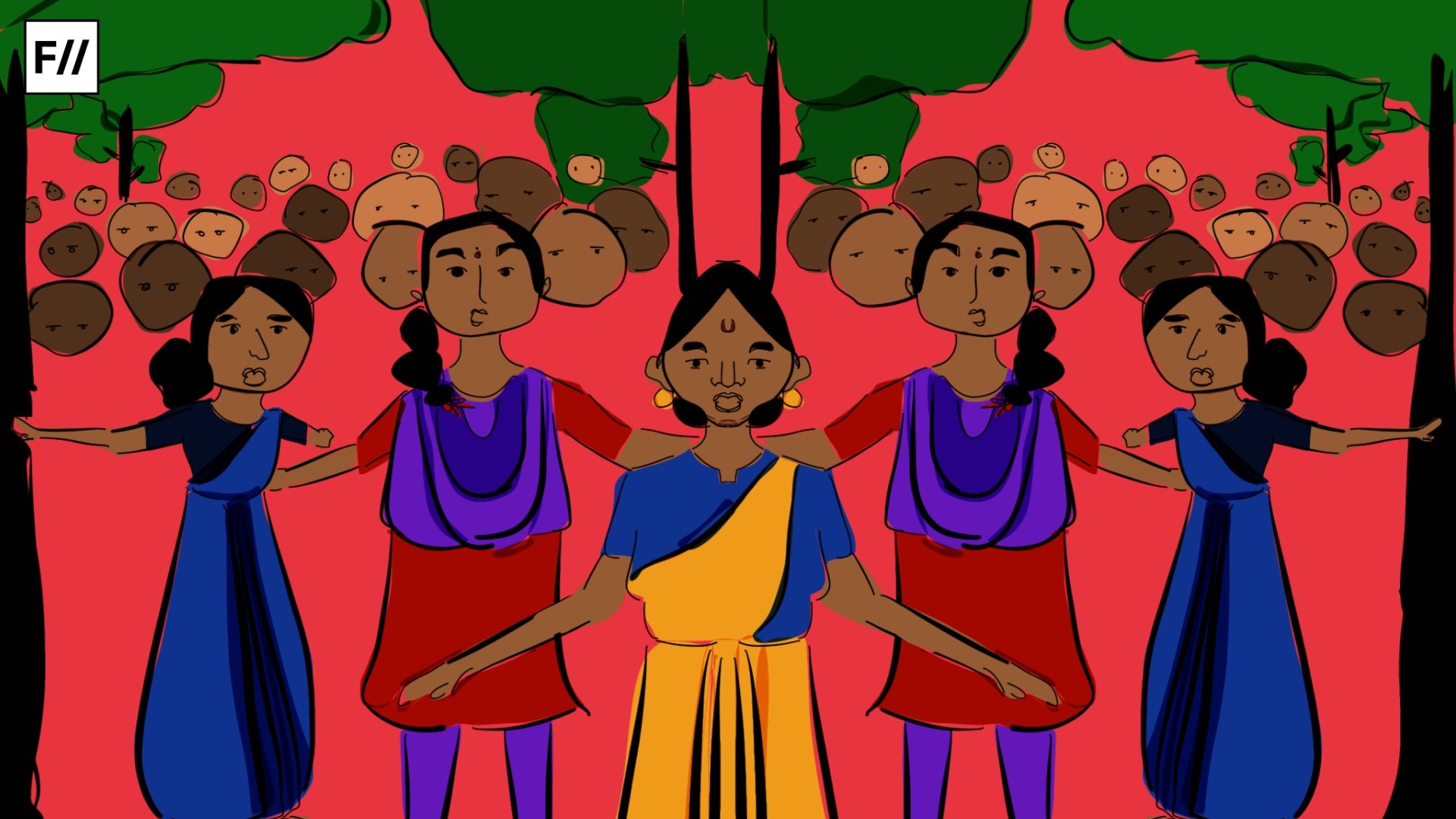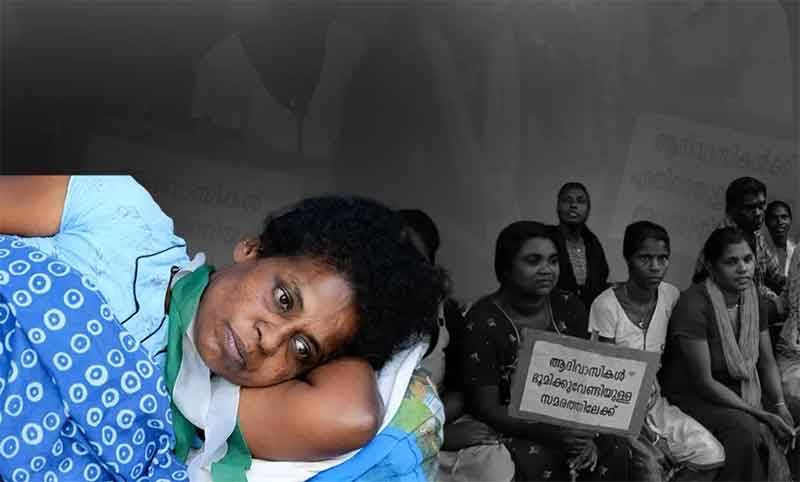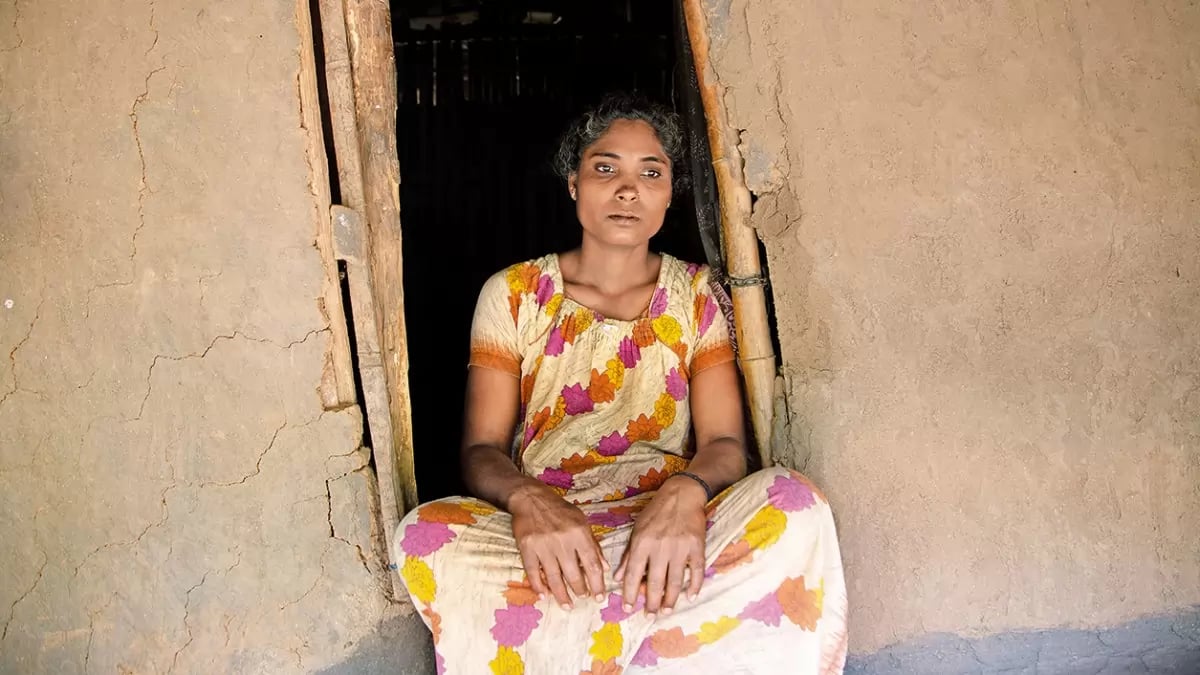In Kerala, Adivasi communities have long struggled with various land-related issues, stemming from historical injustices, discriminatory policies, and encroachments on their traditional lands. There have been notable instances of Adivasi communities in Kerala mobilising to assert their land rights and address issues of land alienation and displacement including the Muthanga, Attappady, Nelliampathy, Arippa and Chengara Land Struggles.
The recent heroic land struggle of the Adivasi communities of Nilambur led by two women leaders Bindu Vailasery and Geeta Aravind resulted in a significant victory for the Adivasi communities in the region.
The recent heroic land struggle of the Adivasi communities of Nilambur led by two women leaders Bindu Vailasery and Geeta Aravind resulted in a significant victory for the Adivasi communities in the region. The hunger strike that went for ten months demanding the consititutional land rights of Adivasi communities ended as their demands were partially approved by the district collector.
The background of the Nilambur adivasi land struggle
Strike Leader Bindu said that ‘Landlessness is the root cause of all of the issues faced by Adivasi communities, five to twenty cents of land is given to us. There is no distance between the houses. If someone spits from their patio, it falls on the neighboring house’s kitchen or patio. This lack of privacy often causes issues among families in tribal colonies. In the tribal colonies, peace is something that can be broken at any moment; it all has become always tense. If they own the land they deserve, their houses will be set in a distance with enough privacy. They can cultivate vegetables and rice in the land and live away from poverty. They strongly believe if the domestic atmosphere is good, their children can study in peace and get employed and make their lives better’.
The Adivasi communities living in colonies are deprived from even basic needs. ‘Having no toilet or having no land to bury the dead are our everyday challenges. There are still people from our community with no land, there are as many as fourteen people living in one house in our colony. We can’t do cultivation for survival. So, the tribal farmers are forced to be slave like labourers in the land of high-end landlords.’ says Giridhas Peruvambatam, one of the leaders of the strike.
The Muthanga land struggle in the 2003 strike mentioned above, led by CK Janu and Geethanandan was met with brutal actions from the police to suppress the struggle. The police opened fire on the Adivasis who claimed their rightful land by declaring the land as their own, resulting in the death of a young man named Joggy.
During the political environment created by the Muthanga incident, the Supreme Court approved the demand of Adivasi communities for land in 2004 in a case regarding land issues of Adivasis filed by Dr. Nalla Terathambi in 2001. Following this, on 21 July, 2009, the Supreme Court produced an 83 page long final verdict, which directs the state governments to return the lost agricultural land to Adivasi communities, making sure each family has 1-5 acres of land suitable for agriculture.
The Muthanga land struggle in the 2003 strike mentioned above, led by CK Janu and Geethanandan was met with brutal actions from the police to suppress the struggle.
According to the verdict, 538 acres of land should be distributed to the landless Adivasi families of Nilambur, under the Kerala Government Land Assignment Act 1960 within a period of two years. It’s also evident from the verdict that the 538 acres land is spread across Chaliyar, Chungathara and Nilambur regions under the forest department.

However the decision was kept under wraps by the forest and tribal departments and even after 14 years there was no action from the authorities. This is not the first time the Adivasis of Nilambur are protesting for their land rights. They had protested in 2007 for the same demands. Giridas recollects that the then collector had promised verbally that the issue will be solved, but the word was not kept.
Even after this, the representatives from the Adivasi community tried to meet different authorities regarding the concern, and they were informed that while the Supreme Court stated that 538 acres of land should be distributed to landless Adivasi families, only 278 acres of land were handed over to the revenue department by the forest department. ‘This is a violation of the Supreme Court verdict as well as Articles 141 and 142 of the constitution’ said Adv P. A. Pouran, the State Secretary of Peoples Union for Civil Liberties.
The adivasi-led strike in Nilambur
On May 10th, 2023, around 200 tribal families from the Nilambur region belonging to different tribal communities including Paniyar, Naykkar, Kurumar, Aalar etc. from 18 tribal colonies that are situated in Akampadam, Idivanna, Parekkad, Myladi (Malappuram’s Chaliyar panchayath), Potthukallu, Pookkottumpaadam, Kalikaavu etc. started protests against the ignorance of the authorities towards their constitutional rights in front of the ITDP (Integrated Tribal Development Project) office Nilambur.
‘They are trying to limit us by paying 10 or 20 cents to 1,000 applicants without giving them the land they deserve. If this is allowed, then we will never get our rightful land. We are 200 families who are protesting now. We have to live by farming. The government should provide land for it. We are not seeking any help or charity, we are asking for the rightful. We need our soil. We will not think about ending this protest without that’ said Bindu Vailasery who was the face of the protest.
The strike faced several challenges throughout the eleven months, the continuous ignorance of the authorities being the first. The government authorities, who would rush to solve the issues of the elite and privileged, ignored the strike continuously. The ITDP officer said that there is not enough land to distribute. However the protesting Adivasis said that they know where the land is and that it is spread across Nilambur Kovilakam, Palakkayam plantation, Vennakkode, Kallund Thambrankunnu, Kannamkund Mankada Kovilakam, Palunda Pothan Estate, Kalikavu Pullenkode Estate, Chokkadu ST Society, Chunkathara Nellippoyil Kodiyeri, Akambadam Atthikkadu, Nilambur Thrikeyakuth Edakode beat, Moolepadam Forest quarters, Munderi. They also said that most of this land is illegally encroached by land mafias with political support. Even though the district collector promised that he would visit the strike, he didn’t and sent the deputy collector instead.
During the strike, the regional MLA PV Anwar made utterly casteist remarks about the protest. He didn’t bother to visit the protest organised and led by voters of his own constituency and even made statements saying the protest is sponsored by anti-government forces, hinting that Adivasi communities are not capable of mobilising for their own rights. He even challenged the strike publically, saying, ‘Let’s see how long this goes.’ After this utterly casteist remarks from the MLA Bindu Vailasseri started a hunger strike. ‘The MLA’s racist attitude was explicit when he said that the tribal people can’t organise on their own and it is a challenge to the voters. We too have the right to be politically active, express our opinion and protest. The authorities want us to remain in the colonies, availing the welfare schemes that the government provides’ Bindu said.
Overall, the victory for the Adivasi land struggle in Nilambur reflects the resilience, determination, and collective action of the Adivasi communities in asserting their rights and challenging historical injustices.
Short of cash and resources, those who were on strike on one day would go for work the following day. The money received was used to support the cause of the protest. The land strike went on for nearly eleven months. Bindu Vailasseri’s health was deteriorating when the collector finally called for negotiation. Human rights activists A. Vasu (Grow Vasu) and Moyin Bappu and tribal activist C. K. Janu had visited the strike and expressed solidarity. Representatives of the Progressive Youth Movement (Purogamana Yuvajana Prasthanam) were also present throughout the strike. Bindu’s body weight had dropped to half of what it was before the hunger strike. But this didn’t break her spirit; she actively spoke to media and supporters.
The historic victory of the adivasi communities
After 314 days of hunger strike and a total of ten months of protest, the district collector finally agreed to negotiate with the protestors and their demands were partially approved by the district collector. The collector ensured that the fifty cents of lans will be distributed to sixty tribal families of the region.

Overall, the victory for the Adivasi land struggle in Nilambur reflects the resilience, determination, and collective action of the Adivasi communities in asserting their rights and challenging historical injustices. This victory, is a significant milestone in the ongoing struggle for land rights and social justice among oppressed communities across India.
Acknowledgement: The author is extremely thankful to Niharika Pradush for helping him write this article.







